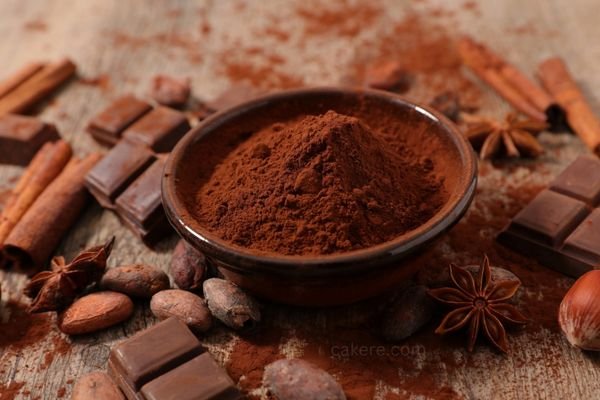Cocoa powder is a staple ingredient in many baking recipes, from cakes and cookies to brownies and hot chocolate.
But what exactly does cocoa powder do in baking, and how does it impact the final product?
In this article, we’ll dive into the science behind cocoa powder and its role in baking, so you can better understand how to use it to achieve the perfect baked goods.

What is Cocoa Powder?
Cocoa powder is made by removing most of the fat (cocoa butter) from chocolate liquor, which is the paste that is produced when cocoa beans are ground into a liquid.
The resulting cocoa powder is a dry, unsweetened powder that is rich in flavor and color. There are two main types of cocoa powder: natural and Dutch-processed.
1. Natural Cocoa Powder
Natural cocoa powder is made from cocoa beans that have been roasted and ground into chocolate liquor.
It is lighter in color and has a strong, bitter flavor. It is also acidic, with a pH of around 5.
2. Dutch-Processed Cocoa Powder
Dutch-processed cocoa powder, also known as alkalized cocoa powder, is made from cocoa beans that have been treated with an alkali to neutralize their acidity.
This process also darkens the color of the cocoa powder and gives it a milder, smoother flavor. Dutch-processed cocoa powder has a pH of around 7.
How Does Cocoa Powder Impact Baking?
Cocoa powder has a significant impact on the flavor, color, and texture of baked goods. Here are a few key ways that cocoa powder can impact baking:
Flavor
Cocoa powder is a key ingredient in many baked goods, providing the chocolate flavor that is so beloved by many.
The flavor of cocoa powder is intense, so it can often be used in smaller quantities to achieve the desired taste.
The flavor of cocoa powder can also be affected by the type of cocoa powder used. For example, natural cocoa powder has a stronger, more bitter flavor than Dutch-processed cocoa powder.
Color
Cocoa powder is also responsible for the color of baked goods. The darker the cocoa powder, the darker the final product will be.
Dutch-processed cocoa powder is darker in color than natural cocoa powder, so using Dutch-processed cocoa powder will result in a darker baked good.
Texture
Finally, cocoa powder can impact the texture of baked goods. The fat content of cocoa powder can affect the moistness of baked goods, and the acidity of the cocoa powder can impact the final product’s crumb structure.
For example, natural cocoa powder’s acidity can cause baked goods to rise, while Dutch-processed cocoa powder’s neutral pH will not have this effect.
Using Cocoa Powder in Baking
When using cocoa powder in baking, it is important to understand how the type of cocoa powder you use can impact the final product.
For example, if you are looking for a light-colored baked good, it is best to use natural cocoa powder. On the other hand, if you are looking for a darker color, Dutch-processed cocoa powder is the better choice.
It is also important to understand how the amount of cocoa powder used can impact the final product.
A small amount of cocoa powder can add a rich chocolate flavor to a baked good, while a larger amount can make it overpowering. When using cocoa powder in baking, it is best to start with a small amount and gradually increase until you achieve the desired flavor.
Now that you know what cocoa powder does in baking, it’s time to learn how to use it in your recipes. Here are some tips to help you get started:
- Read the recipe carefully: Make sure you understand what type of cocoa powder the recipe calls for and whether it requires baking powder or baking soda.
- Measure accurately: Cocoa powder can be messy and difficult to measure, so make sure you’re using accurate measuring tools.
- Sift the cocoa powder: Sifting the cocoa powder will help to remove any lumps and ensure that it’s evenly distributed throughout your batter.
